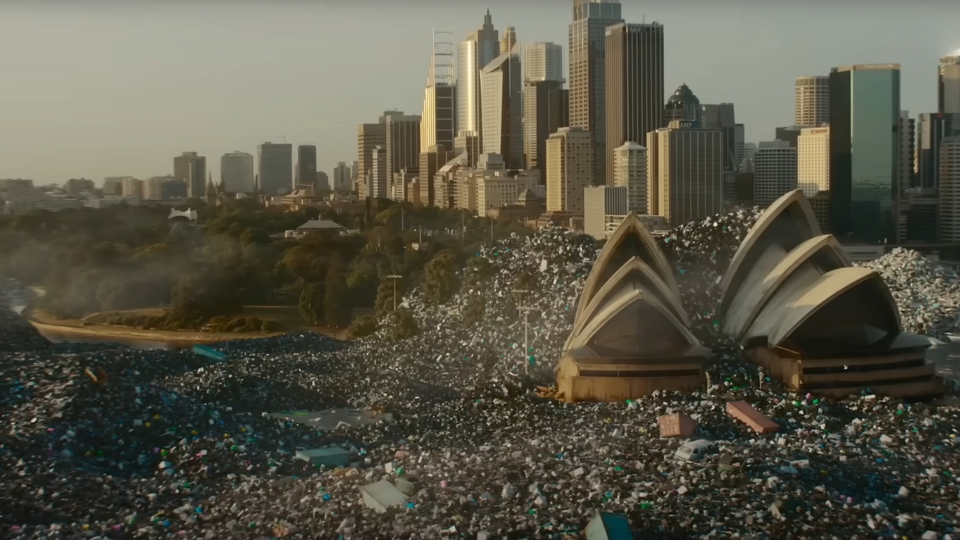
A better way is possible

As a father and consumer in our modern, fast-paced, convenience-driven society, it would be difficult.
Actually, it would be bloody frustrating.
It would be difficult to find time to prepare endless fresh meals, dine in instead of getting Uber Eats, sterilise every piece of medical equipment, or go back to glass (reusable) milk bottles for my morning cup of tea.
Without a doubt, plastics have made our lives easier. But the 'material revelation' of the 20th century has come at a cost. Out of the 400 million tons of plastic that will be produced globally, at best, 9% will be recycled this year. And 40% of plastic produced is packaging, used just once and then discarded, destined for landfill.
We have been sold a story (arguably a myth) by the plastics industry. "Just do the right thing; it's an obligation, and the planet will thank you for your cooperation," the slogan went.
But does the planet really thank us? The simple answer is no. Most of what we have put in the bin or ‘recycled’ has ended up in landfills in industrialised nations like Australia and certainly in less industrialised nations.
The plastic crisis is a design problem
In fact, plastic was never meant to be recycled. It is made from long polymer chains and myriad additives designed for durability; they did a good job! Its resilience makes repurposing challenging, and recycling runs counter to its core purpose.
It is clear we're not going to recycle ourselves out of this problem. While we do need for both the recycling industry to succeed to manage the enormous amounts of plastic in circulation and for the conventional plastics manufactures to adapt and support circularity, this only mitigates the status quo in the short term. Our mindset needs to change.
The plastic crisis is a design problem. We are using our longest-lasting material for some of our most temporary commodity goods. In nature, there is no waste. When something dies or defecates in a balanced ecosystem, that biomass is food for something else to grow from, repeating the process ad infinitum.
Our ecosystems tip out of balance when the waste being created grows exponentially, or the ability to process that waste diminishes. And we are now well beyond that on both fronts.
We are now at a critical juncture. Just as we are reaching peak plastic and a runaway linear materials economy experiencing exponential growth, the promise of a biomaterials economy is emerging. We must design our materials and waste systems based on how they work in nature.
Natural Materials Innovation
Embracing biomimicry (nature-inspired design that mimics nature's solutions for human-made problems) in a circular economy encourages the creation of products and systems that are designed with waste reduction in mind, ensuring that materials can be continuously cycled and repurposed. Materials that come from nature and go back to nature need to be fully embedded in this process with clearly identified and accessible pathways after use.
America and Europe are already embracing biomaterials in terms of investment, policy, and regulations. And while Australia is falling behind on this front, we are punching above our weight in terms of plucky innovative start-ups beginning to find market solutions.
If we are to make this vision a reality, we need to start investing in these solutions, implementing appropriate regulatory frameworks, embracing reduction and reuse, and developing the end-of-life infrastructure required to ensure circularity for conventional plastics and biomaterials.
The Future is Natural
Currently, we can't put compostable packaging into our green bins. Toxic forever chemicals such as PFAs were turning up in compost heaps thanks to so-called 'compostable products and packaging' such as bamboo and bagasse cutlery, boxes, and bowls that used these toxic chemicals as oil and water barrier coatings and binding agents.
In a case of once bitten, twice shy - our EPAs have begun blanket banning these materials from our green FOGO (Food and Garden Organics) bins. Whereas a rigorous testing and certification program could root out bad actors and any emerging contaminants.
Yet genuinely compostable packaging is still a better option than many plastics because certified backyard compostable materials are generally made from renewable and natural (and sometimes organic/agricultural waste) feedstocks instead of petrochemicals. They're less toxic to humans (no endocrine disruptors), have a reduced impact on the environment when fugitive litter escapes the waste cycle, and don't break up into microplastics.
So, while it has been hard to find hope in our plastic age, I believe we can find comfort in the fact that change is coming. Let’s embrace it, create infrastructure and opportunities so it can deliver a scale, catch up and surpass conventional materials. Together, we can create a future where one day, our planet might finally thank us!
What would the future of your business look like without plastics?
Book a call and chat to one of our materials experts and find out.














